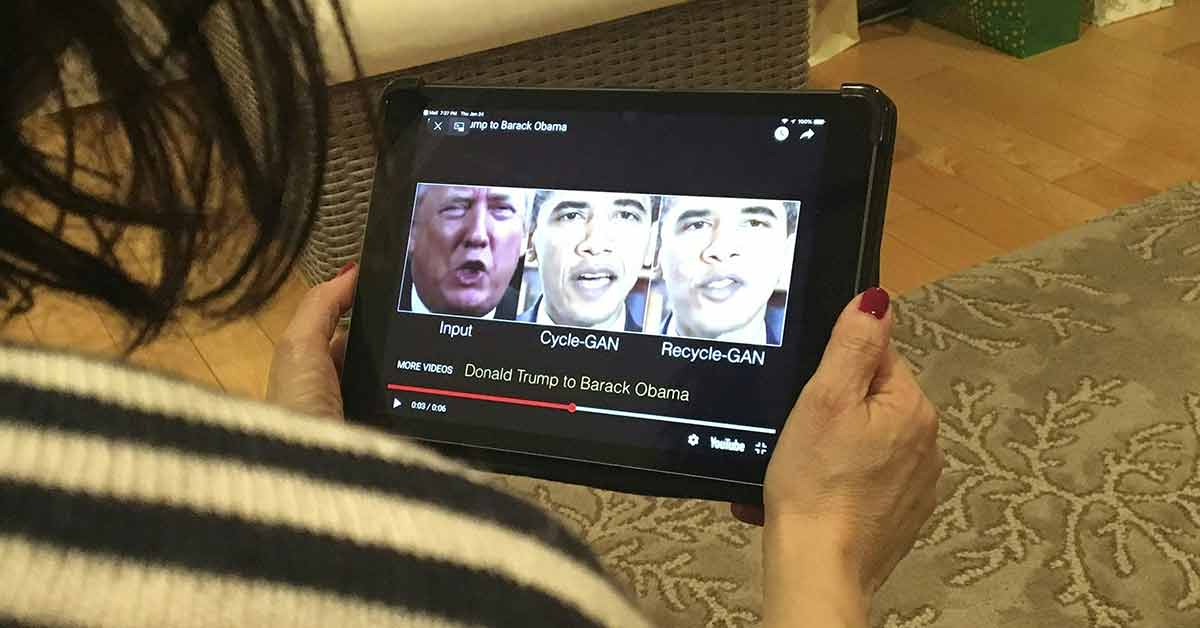If you have been on Facebook or Instagram lately, you would have surely seen a number of short clips of Rihanna’s music video Diamond, or any other videos for that matter – but instead of the celebrity’s face in the clips, it’s now one of your friends.
Over the past few months, Deepfake video app Reface has garnered much attention online, bagging top download slots on the iOS App Store and Google Play in 100 countries. Reface is said to be one of the most advanced, fun and top-rated face swapping apps at the moment. Combined with a wealth of source videos, gifs, photos, and pictures – you can make realistic face swap videos and gifs with just a single selfie.
Deepfake, a portmanteau of "deep learning" and "fake", is an artificial intelligence (AI)-based human image synthesis technique. It is used to combine and superimpose existing images and videos onto source images or videos using a generative adversarial network (GAN), a machine learning technique. The combination of the existing and source videos results in a fake video that shows a person or persons performing an action at an event that never actually occurred.
GANs – in their most basic sense – are where two different networks contest each other. One network generates the fakes (generative) and the other evaluates how real they look (discriminative). The generative network’s objective is to fool the discriminative network until it can no longer distinguish between what is authentic and what is fake.
As time progresses, member states within the technology-welcoming ASEAN bloc are becoming more technologically developed. Singapore leads the pack, Thailand has its Thailand 4.0 initiative, and frontier economies like Cambodia too are making technological advances. All this, of course, is essential if ASEAN is to be relevant to the rest of the world as the Fourth Industrial Revolution (Industry 4.0) takes-off.
Deepfakes, however, represent the shadier (and potentially damaging) flipside to technology.
A Brief History
Face swapping has been done in movies for years, but in order to do it, skilled video editors and computer-generated imagery (CGI) experts needed to spend several hours to achieve only decent results.
Then, in December 2017, a user named “DeepFakes” posted realistic looking explicit videos of famous celebrities on popular discussion website Reddit. He generated these fake videos by superimposing celebrities’ faces onto the bodies of adult movie actors.
Today, new breakthroughs in technology allow anyone with deep learning techniques and a powerful graphics processing unit (GPU) to create fake videos far superior to the face swapping techniques seen in old films. No video editing skills are needed as the entire process is handled automatically by an algorithm.
The other thing that a person needs in order to start creating fake videos are sample images of person A and person B.

Swiss German-language daily, Aargauer Zeitung, once said that the manipulation of images and videos using AI could potentially become a dangerous mass phenomenon.
Revenge Porn
While the falsification of images and videos has been done even before the emergence of video editing software and image editing programs, in the case of deepfakes, it is the realism which is new and also terrifying.
The fact that the improvement in technology first emerged with explicit videos of famous celebrities has put those who are aware of the technology and its implications on high alert. This, coupled with the ease of creating deepfakes, has given rise to the fear of targeted hoaxes and revenge pornography.
Revenge pornography, or revenge porn, is the distribution of sexually explicit images or videos of individuals without their permission. The sexually explicit images or video could be made by a partner with or without the prior knowledge and consent of the subject. The possession of the material could also be used by the perpetrators to blackmail their subjects.
Political Agendas
But revenge pornography is just one of the many problems that deepfakes may pose. It could also be used to further political agendas. One of the more famous deepfakes is the one of former United States (US) president Barrack Obama seemingly saying things he never did. The video was actually a public service announcement (PSA) on fake news.
Political agendas are another worry brought on by the inevitable advances in deepfake technology, but with fake videos, the possibilities are truly limitless. And while those who have seen deepfakes know that there are still little quirks that could give away whether a video is authentic or not, it’s only a matter of time before the technology becomes so advanced that it will be almost impossible to tell the difference between a deepfake and reality.
Related Articles:
